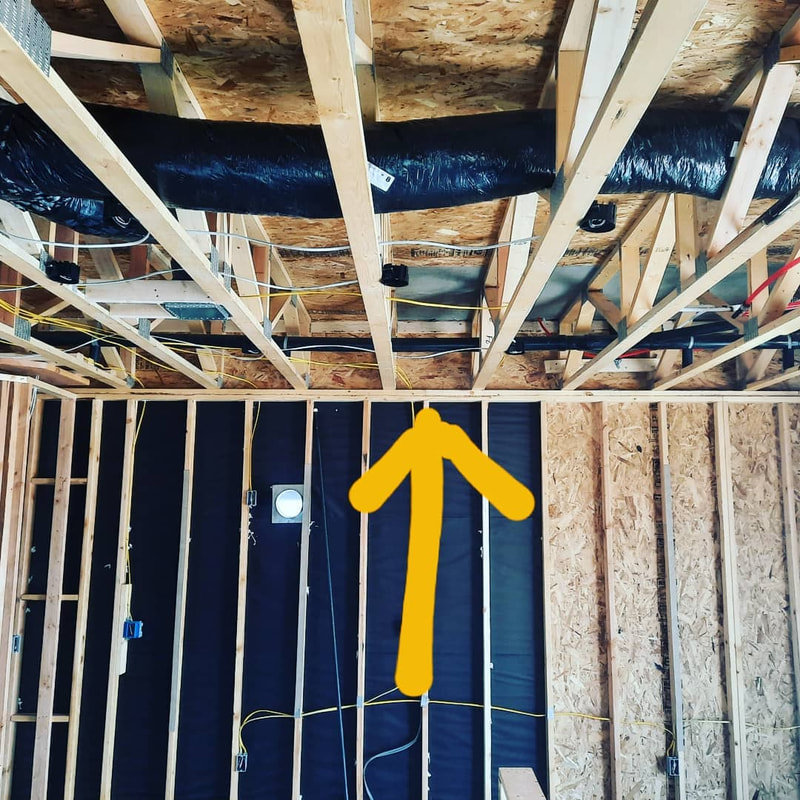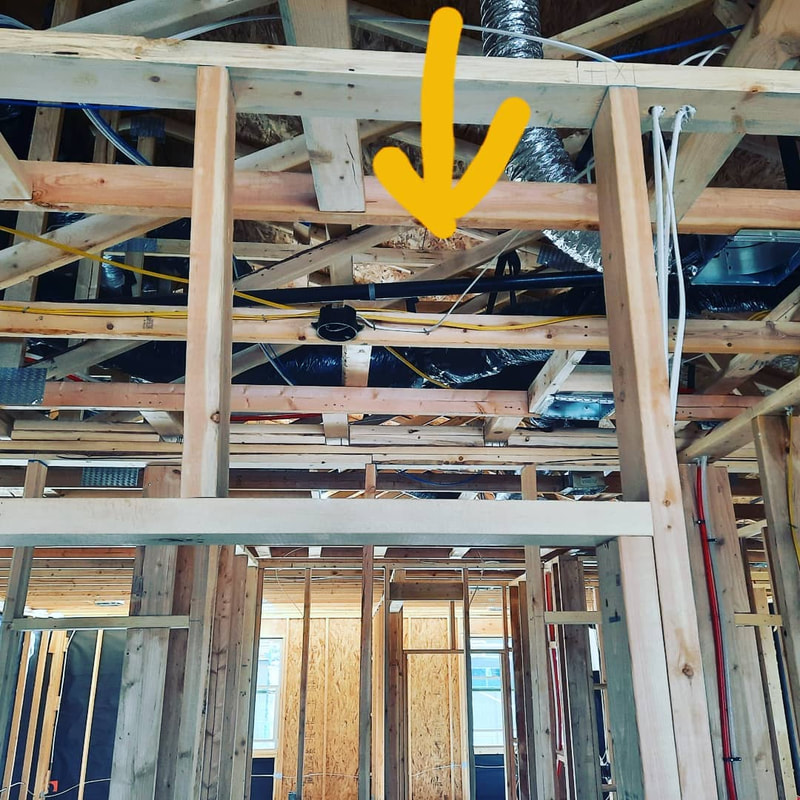|
I've been coming across this a lot lately on new builds. This is your water meter. In cold areas they are in your house because of freezing temperatures. In Arizona they are in a box located in your front yard. As you can see it is pretty well buried under the dirt, which makes it hard to access. Why is this bad you might ask? Well...your house had 2 main water shut off valves. One is located on the exterior of your house usually along a garage wall. If that one fails, guess where your second shut off is? You guessed it! Buried under the dirt upstream of your water meter. Not very accessible in an emergency. Hopefully you'll never have an issue, but it never hurts to be prepared.
0 Comments
On one of my 11 month warranty inspections I found this. What you are seeing is a water softener drain line tapped into a plumbing vent in the attic space. Why this is a no no.
1. The potential for gas fumes to travel from the plumbing system to the water softener and contaminate your potable water. Ick! The drain should have an air gap to prevent this. 2. Obviously tape isn't the proper connection technique. This was located above the kitchen area. If this were to leak or separate it would flood their kitchen and cause all kinds of damage! Because I was a journeyman plumber (on new construction) for over 10 years, one of my favorite jobs is the Pre-drywall Inspection. I like to see all the different techniques and styles builders use and how they differ from one another. To keep it simple I'm just going to focus on some plumbing issues that should be addressed.
1. The 2nd picture shows an arrow pointing at a 3" abs drain pipe in the ceiling trusses. This is the main drain coming from the 2nd floor master bath. Do you notice how it looks bowed? It is, the picture doesn't do it justice. The sagging in the middle will cause solids to collect there and lead to potential block up. You will get to know a drain cleaning company well. 2. The 3rd pic isn't as crucial because it's a vent pipe(not a drain pipe) for a laundry room. You can see it has a lot of slope. This should only have a 1/4" per foot. When I instantly see these items it concerns me what else I will uncover. These are good things to be fixed or at least documented before it's too late and the sheetrock is up! Being a former journeyman plumber, I noticed multiple issues in this crawlspace I inspected.
1. The copper flex line (top arrow) is not the proper way to connect to PEX piping (Could lead to future leaks and indicates that it wasn't installed by a licensed plumber). 2. The open red PEX pipe (right arrow) is the TPR (Temperature/pressure relief valve) from the water heater (The TPR valve allows excess pressure/heat to escape the water heater tank. This will lead to added moisture to the crawl space. Also it's not in view to monitor.). 3. The metal band iron strapping(bottom arrow)is in contact with the copper waterline (These two dissimilar metals touching will cause galvanic corrosion and lead to increased deterioration.). Keeping you educated! |
AuthorBringing 10+ years of plumbing experience to educate and bring awareness to home owners regarding Home Inspections. Archives
June 2021
Categories
All
|








 RSS Feed
RSS Feed


